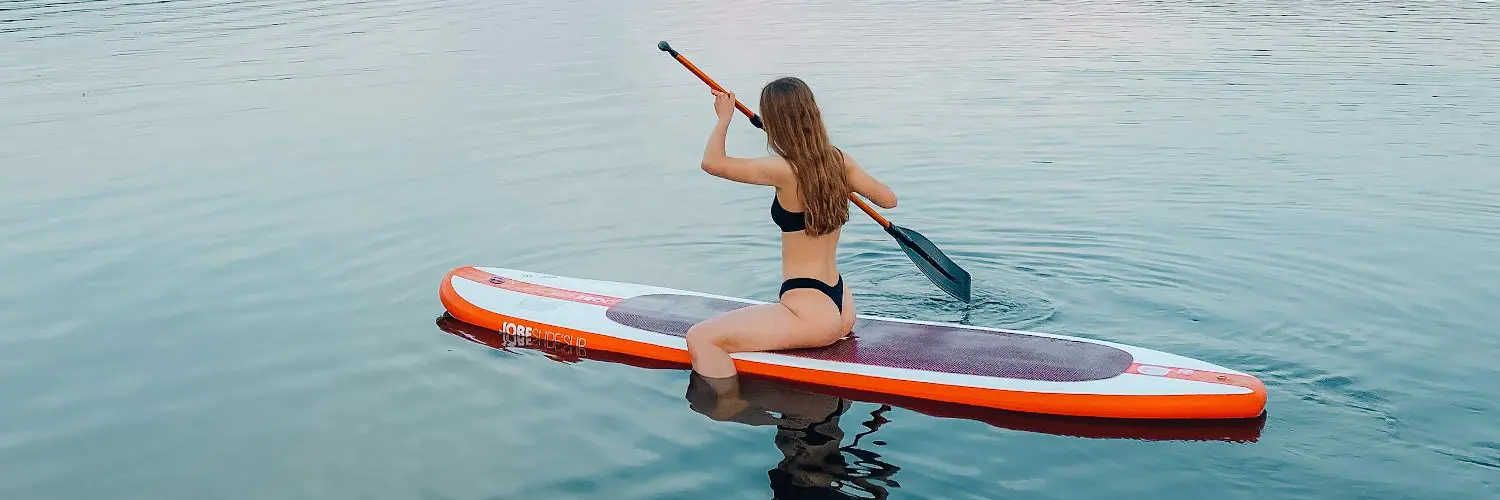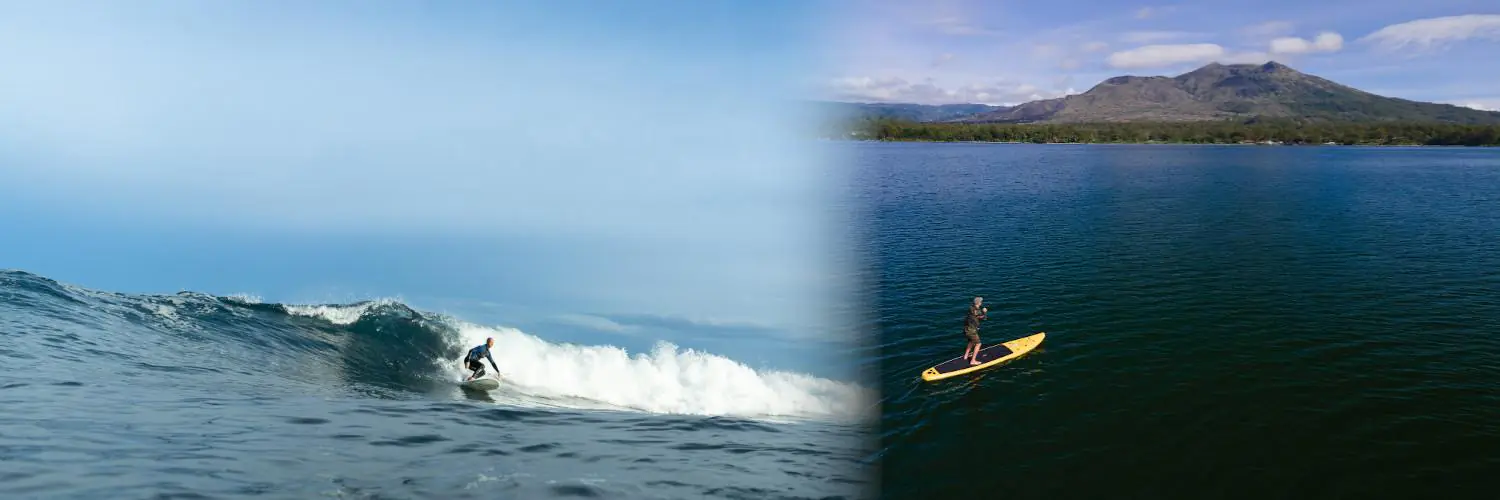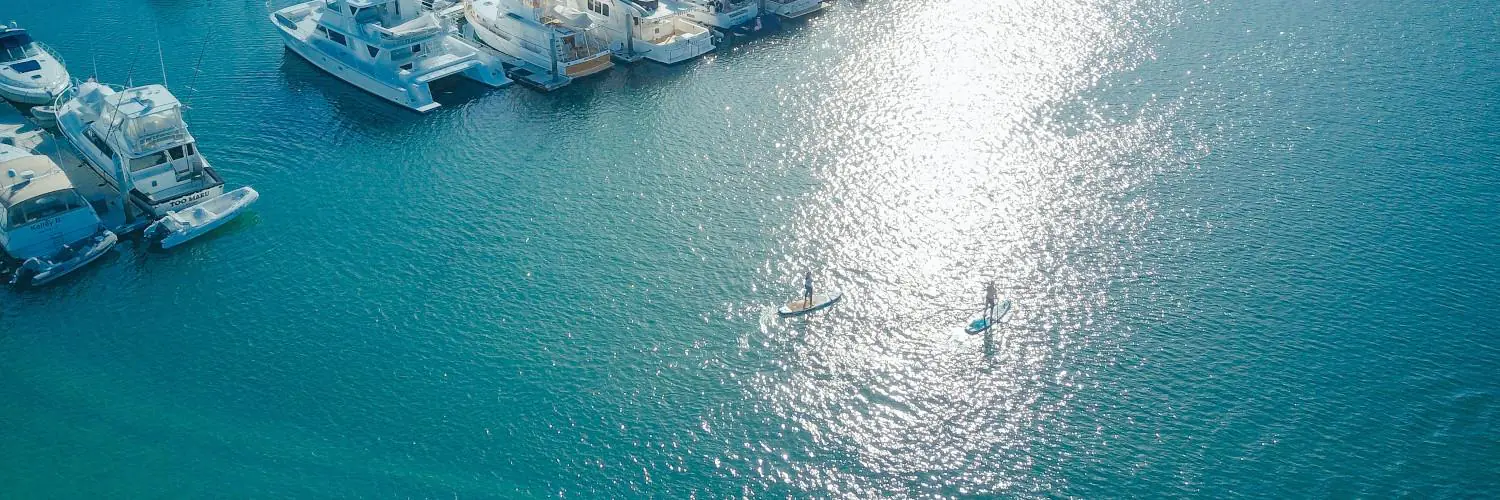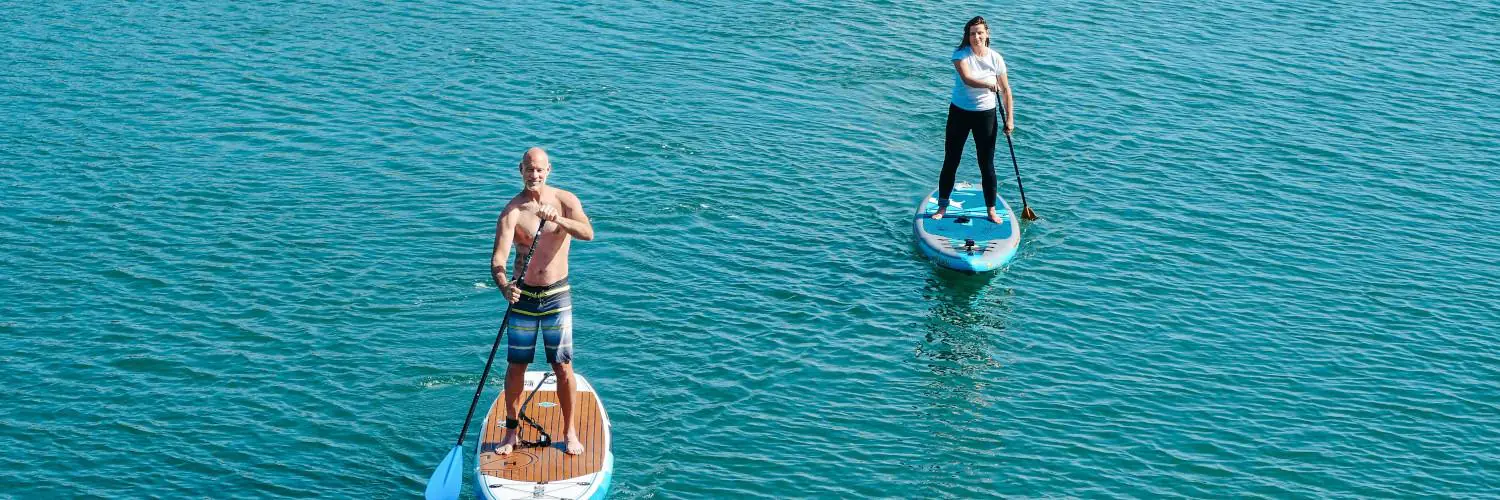Stand-up paddleboarding (SUP) has surged in popularity as a versatile water sport that accommodates a wide range of activities such as touring, racing, yoga, and fishing. The weight capacity of a SUP board is a critical factor that affects its stability, performance, and safety on the water. Every paddle board, whether solid or inflatable, comes with a manufacturer’s recommended maximum weight capacity, which is important for buyers to consider to ensure an enjoyable and secure experience.
SUP boards are available in various lengths, widths, and constructions, each designed for specific uses and catering to different rider weights. All-around boards generally range from 10 to 12 feet in length and provide a balance between speed and stability. For beginners or those using their SUP for leisurely activities, a wider board may offer more stability, while those looking for speed might choose a narrower, longer board. It is imperative for paddlers to select a board that not only suits their skill level and intended use but also supports their weight along with any additional gear they plan to carry.
Table of Contents
Understanding SUP Board Weight Capacity
When selecting a SUP board, it’s crucial to consider the weight capacity, which is determined by a combination of factors such as board volume and size. This capacity ensures the paddler has sufficient buoyancy and stability on the water.
Factors Determining Weight Capacity
SUP boards are designed with a specific weight capacity, which is largely influenced by the board’s volume. The volume, measured in liters, correlates directly to the board’s buoyancy. Another determinant is the thickness of the board – a thicker board generally offers greater buoyancy, contributing to a higher weight capacity. Manufacturers may integrate materials and construction techniques to enhance the board’s ability to support weight without compromising performance.
Maximum Weight Capacity
The maximum weight capacity is the top limit of weight that a SUP board can support while still performing effectively. Exceeding this limit can lead to a decrease in stability and maneuverability, and may even result in sinking or damaging the board. For each board model, manufacturers provide the maximum weight capacity, which should always be adhered to for safety and optimal performance.
SUP Size and Weight Chart
To assist purchasers in selecting the appropriate board, many manufacturers provide a size chart. Here’s a simplified table showcasing how SUP size, particularly length and width, correlates with board weight and weight capacity:
| SUP Size (Length x Width) | Board Weight | Maximum Weight Capacity |
|---|---|---|
| 10′ x 32" | 25 lbs | 200 lbs |
| 11′ x 34" | 30 lbs | 240 lbs |
| 12′ x 35" | 35 lbs | 275 lbs |
| 10’6" x 31" | 28 lbs | 220 lbs |
| 11’6" x 33" | 33 lbs | 260 lbs |
It’s important for potential buyers to consult the specific SUP size and weight chart provided by the product manufacturer to make an informed decision based on their own weight and the intended use of the paddleboard.
Choosing the Right SUP Board
Selecting the suitable SUP board is crucial for ensuring a stable and effective paddling experience. The weight capacity, combined with length, width, and volume, affect the board’s performance and suitability for each paddler based on their experience level.
General Paddle Board Sizing
Paddle board selection begins with understanding size specifications. Paddle boards typically range from 8 to 14 feet in length, with widths between 32 and 34 inches. A board’s length influences maneuverability and speed, while its width impacts stability. The general advice for most paddlers is to aim for a board that supports their weight and provides a comfortable level of stability. A paddle board size chart can serve as a preliminary guide when correlating a rider’s weight to suitable board dimensions.
SUP Size Calculator
A SUP Size Calculator is a tool that aids in determining the appropriate board volume and weight capacity required for a rider. This calculator takes into account the rider’s weight, experience level, and preferred activities. For instance:
- A beginner paddler often benefits from a higher volume and a more generous weight capacity for added buoyancy and stability.
- An intermediate to advanced paddler might opt for a board with a tailored volume that supports their more specific requirements for speed or maneuverability.
Recommendations for Different Skill Levels
For beginners, a wider and longer board is recommended for maximum stability and ease of learning. They should seek boards that prominently note a stable, user-friendly design.
Intermediate paddlers might look for a board that balances stability with more agility to improve technique and tackle a variety of conditions.
An advanced paddle boarder typically selects a board based on the specific activities they pursue, such as racing or surfing, where speed and precision are vital.
Recommendations by skill level:
| Skill Level | Board Length | Board Width | Volume |
|---|---|---|---|
| Beginner | 10-12 feet | 32-34 inches | High |
| Intermediate | 10-11 feet | 31-32 inches | Medium |
| Advanced | 9-14 feet | 29-30 inches | Varied |
Each paddle boarder’s needs should direct the final choice of SUP size, ensuring that it matches their experience, intended use, and skill level to provide the optimum paddling experience.
Specific Uses of SUP Boards
Stand up paddle boards (SUP) come in various designs tailored to specific activities such as yoga, fishing, touring, and racing. Each type emphasizes features that enhance the experience and performance for its intended use.
SUP Boards for Yoga
SUP Yoga requires a stable platform, so yoga SUPs often have a wider deck and a planar surface. They typically range from 34 inches in width, allowing for better balance during various yoga poses. These boards also often come with a softer top to provide comfort during exercises and movements associated with SUP yoga.
Fishing SUPs
For SUP fishing, a paddle board must offer ample space and load-bearing capacity to handle equipment and catches. Fishing SUPs are characterized by their extra width and volume, providing stability enough to cast and reel in with confidence. They often include features like built-in mounts for fishing rods, a slip-resistant deck, and storage areas.
Touring and Racing SUPs
Touring paddle boards are designed for longer distances and are shaped to maintain a straight tracking and efficient glide through the water. They are generally narrower and longer than all-around boards, with a typical width around 30 inches, aiding in speed and distance coverage.
In contrast, racing paddle boards prioritize speed above all else. These boards are even narrower, sometimes less than 30 inches wide, and have a sharpened nose to slice through water with the least resistance possible. Both touring and racing SUPs require more skill to balance due to their reduced width.
SUP Board Construction and Materials
When selecting a SUP board, one must consider two major types: inflatable and hard SUP boards. Each has distinct construction methods and materials that influence their performance, durability, and weight capacity.
Inflatable vs. Hard SUP Boards
- Construction: These boards are constructed with layers of PVC material and often have drop-stitch construction, which allows them to maintain shape when inflated.
- Advantages: Inflatable SUPs are known for their ease of storage and transport, as they can be deflated and rolled up.
- Weight Capacity: They typically can support weights between 285 and 500 pounds.
- Usage: Inflatable paddle boards cater well to recreational paddlers and are preferred for their durability in various conditions.
Hard SUP Boards:
- Construction: Most hard SUP boards are designed using foam cores that are then wrapped with materials like fiberglass, epoxy, or plastic.
- Advantages: Hardboards offer better performance in terms of speed and maneuverability.
- Weight Capacity: The weight limit for hard paddle boards generally ranges from 200 to 300 pounds.
- Usage: Enthusiasts aiming for speed or competitive paddling often gravitate towards hard SUPs for their responsiveness and glide characteristics.
Materials and Durability
-
Epoxy and Fiberglass:
- Usage: Commonly used for constructing the outer layer of hardboards.
- Properties: Offers a strong, lightweight, and stiff board.
- Durability: Though durable, they can be prone to dings and scratches and require careful handling.
-
Foam:
- Core Material: Foam serves as the core for many hard SUP boards.
- Properties: Contributes to the buoyancy and lightness of the board.
-
Plastics:
- Usage: Often used for entry-level boards due to its affordability.
- Durability: Plastic boards tend to be heavier and more durable, making them suitable for beginners or rougher conditions.
Considering the various materials used in the construction of SUP boards, paddlers should weigh the trade-offs between performance and durability to find a board that fits their needs and skill level.
Improving Performance and Enjoyment
Choosing the correct stand-up paddle (SUP) board and understanding how its characteristics influence performance can greatly enhance one’s enjoyment of the sport. It’s important to consider the board’s weight capacity, which directly affects its stability and speed, to achieve a pleasant and effective paddling experience.
Balancing Weight and Maneuverability
For optimal performance, paddleboarders must find a balance between the weight they add to their board and its maneuverability. Heavier paddlers, including those who may want to bring along gear, kids, or pets, should consider boards with a higher weight capacity to maintain buoyancy and ease of movement through the water. On the other hand, a board that’s too large can become cumbersome, especially for lighter paddlers or beginners who may not have the agility or muscle strength needed for effective paddling.
Board Width:
- Narrower Boards (31" to 32" wide): Suitable for speed and advanced paddlers with good balance.
- Wider Boards (33" to 35" wide): Offer increased stability, making them ideal for beginners, novice paddlers, or those with extra weight.
Board Length:
- Short Boards (10 feet): Easier to maneuver, better for surfing and children.
- Long Boards (11 to 12 ½ feet): Enhance speed and tracking, suitable for touring or racing.
Enhancing SUP Stability and Speed
Stability is a critical factor for beginners and those who are overweight or who enjoy paddling with kids or pets. A stable board provides a confident paddling experience, allowing paddleboarders to focus on technique rather than staying upright. Wider boards offer a broader surface area, distributing the weight more evenly and reducing the chance of tipping.
Speed on a SUP board is influenced by both the design of the board and the paddler’s skill. Longer and narrower boards reduce water resistance (drag), resulting in higher speeds ideal for racing or efficient touring. A paddler’s paddle technique and muscle power also contribute significantly to how fast they can move through the water.
Key Factors Affecting Stability and Speed:
- Width: Wider boards are more stable but may sacrifice speed.
- Length: Longer boards increase speed but can be harder to turn.
- Paddler’s Skill: Developing a strong paddle stroke can help overcome drag.








